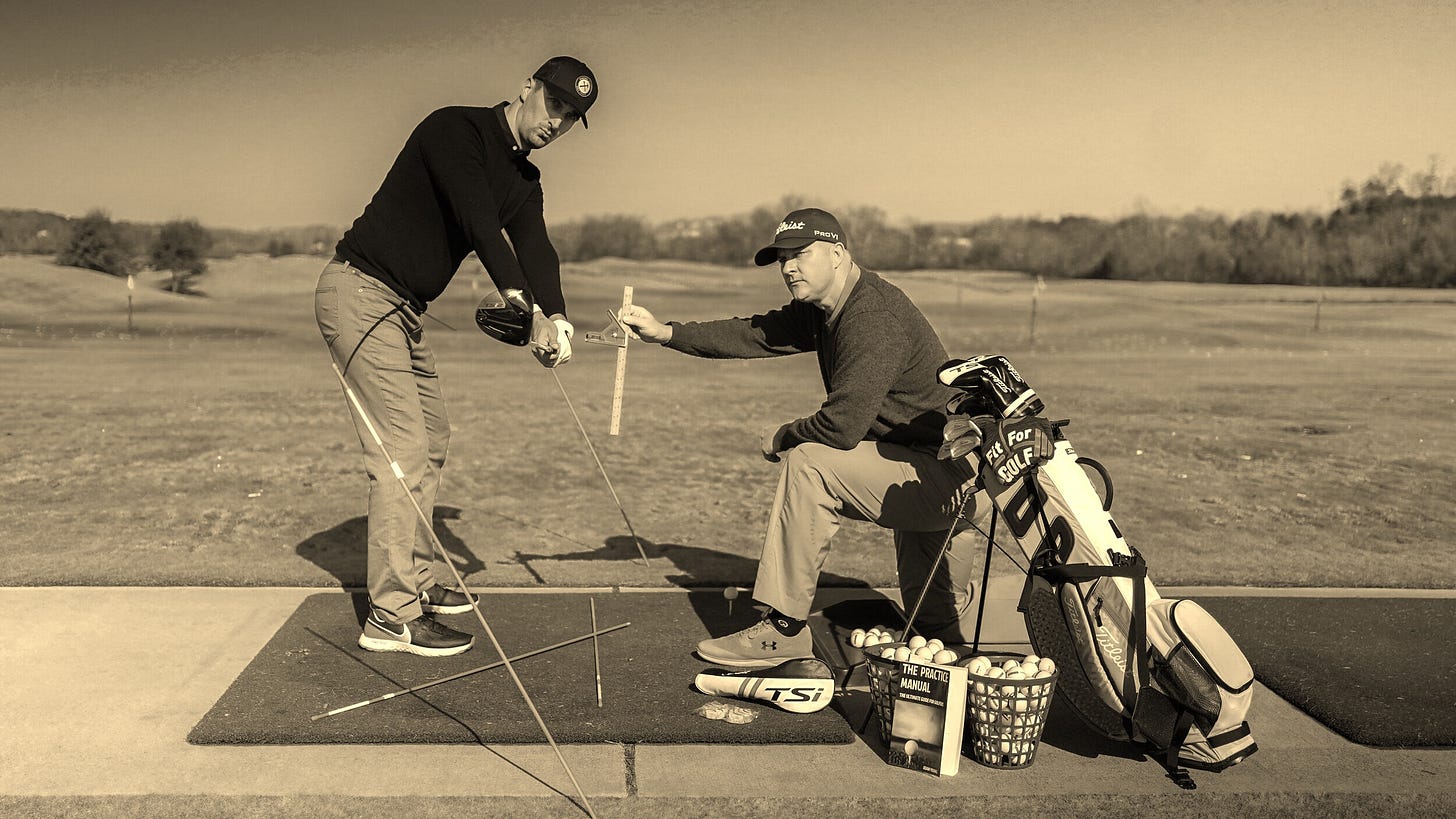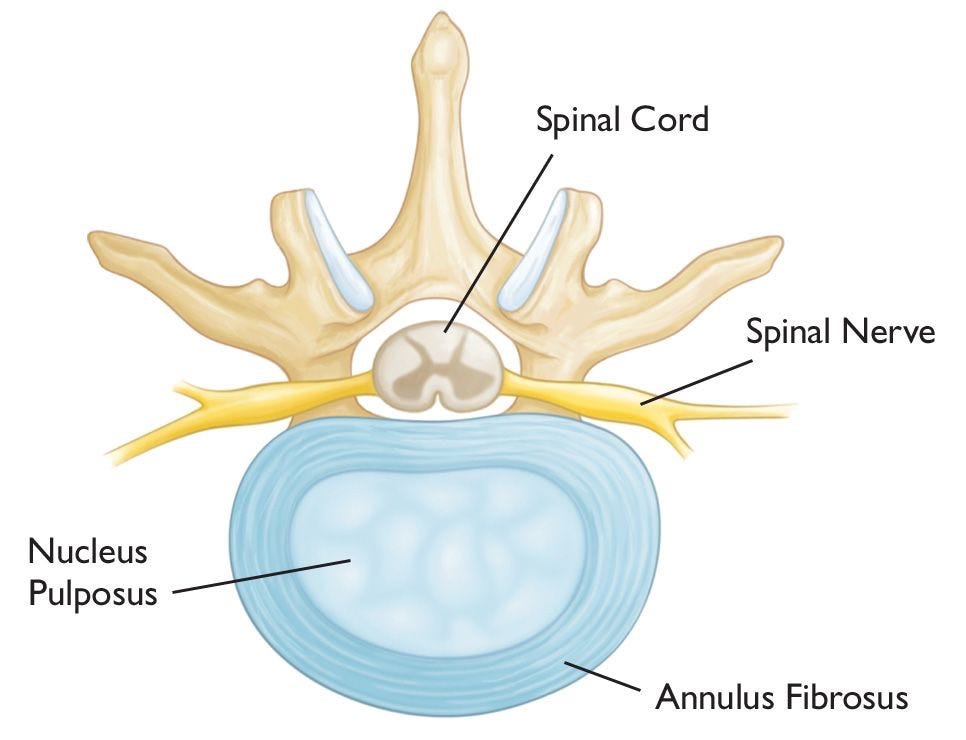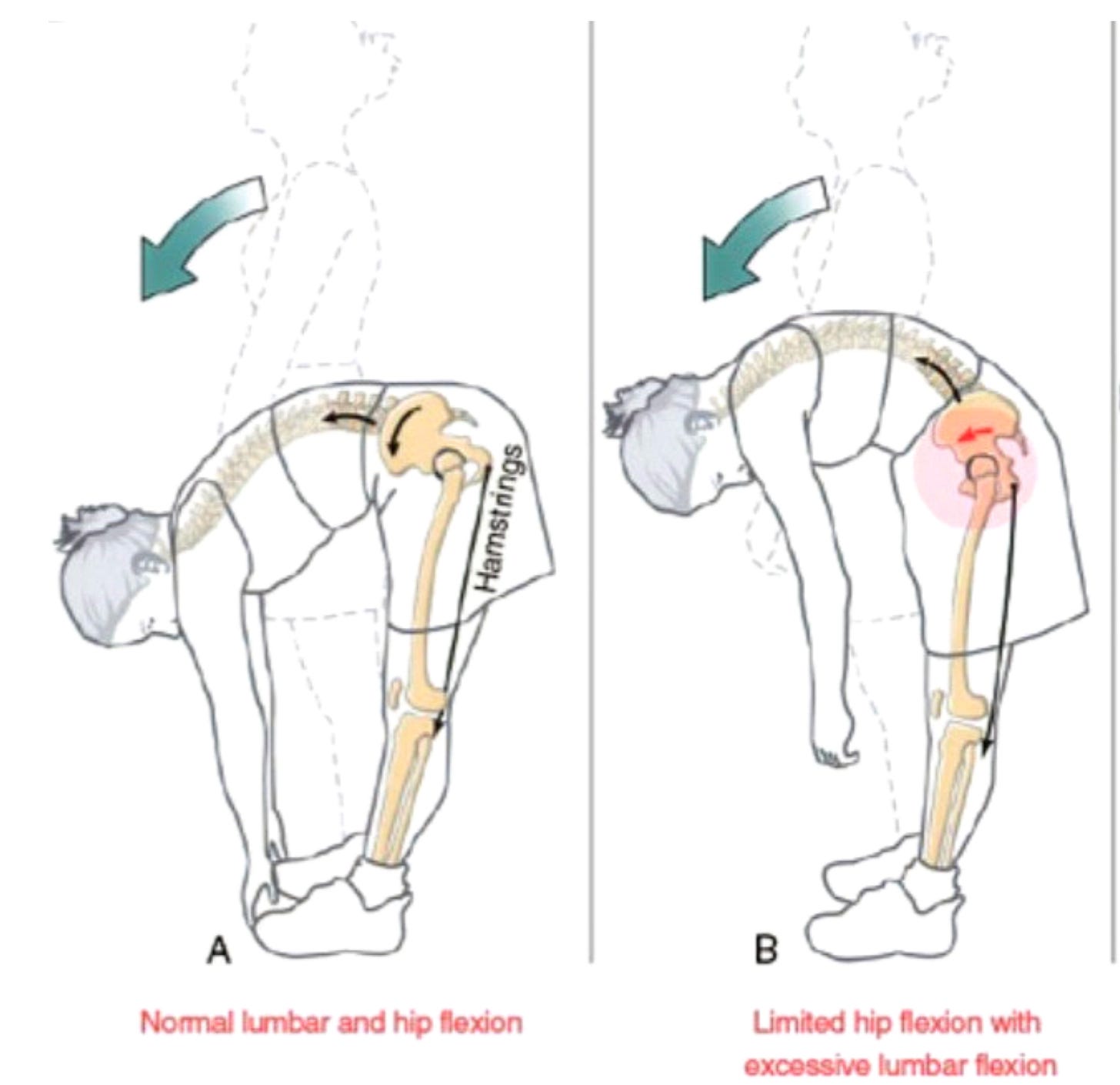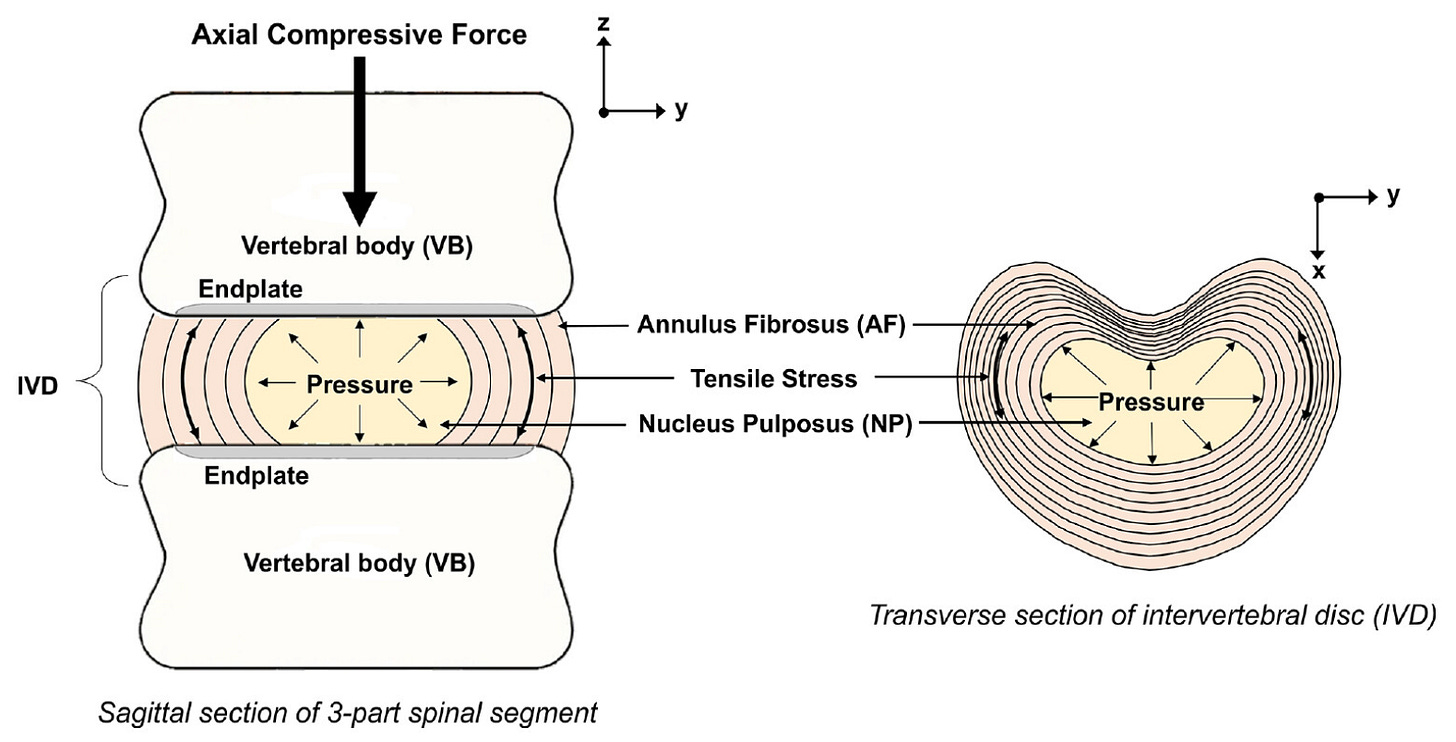The Fragility of the 40-year old Disc
Why Mike from Chasing Scratch Likely Suffered a Disc Injury in Season 7
For those of you that don’t listen to the Chasing Scratch Podcast, it is two guys (Mike and Eli) in their 40s who do everything in their power to attain an even par round of golf and even further maintain the lowest handicap. Season 7 was riddled with injuries and missed performances which has now become folly. At the final major of the season, while Eli was home recovering from hip replacement surgery, Mike was chasing glory. But unfortunately a back spasm took him down and he was forced to withdraw. As I listened to the episode I immediately thought, “he’s injured a disc,” but shockingly he kept going, until he couldn’t.
With the above backdrop let’s dive into the science and mechanisms of disc injury. Mike’s back pain came from seemingly innocuous activities - tying shoes, transferring balls from one bag to the next, and attaching a rangefinder. While the classic story of a disc injury involves a barbell and deadlift, I see more of the opposite in clinical practice. But why?
The lumbar disc is composed of an ovoid fibrous ring that houses a central jelly substance to allow the spine to move and absorb stress. Without the disc our spines would be rigid rods of bone without flexibility; it could withstand great weight, but not helpful in practicality.
When the spine musculature is engaged properly the disc load is distributed evenly and no injury occurs. However, when spine musculature is not properly engaged aberrant movement patterns improperly load the disc and can cause injury. The most common aberrant movement pattern is the lumbo-pelvic rhythm.
When forward flexing there are two main movements: pelvic flexion and lumbar flexion. Most people abandon the pelvic flexion and rely only on lumbar spine flexion subconsciously. Typically this is a result of poor pelvic control and weak glutes. This maladaptive movement places excess strain on the lumbar disc and is likely the move that took Mike down - a process called delamination. When the pressure inside the disc increases and is focally distributed, the inner gel substance leaks out into the first layer of fibrous material. This can progress, layer by layer, insult by insult, until a disc herniates into a nerve and causes radiculopathy. Even in the initial stages, exposure of the gel material in to the disc fibers is very proinflammatory. One may notice an initial twinge that seems to build in intensity over several days owing to the bodies reactive forces attacking and repairing this new injury. Muscles can even react to the inflammation, causing spasm and torsion of the spine which can confuse the sufferer and diagnostician. The initial delamination may be the first onset of pain, but as in the case of Mike, the stress wasn’t great (golf balls, shoes, rangefinder). So why would such little weight cause so much pain?
The little known fact about disc injury is that it is not a one hit phenomenon, but rather the accumulation of many small unknown insults. Studies have shown that even modest spinal compression forces (800-1,000 N) can cause disc injury, but only after repeatedly flexing of the spine (18,000-25,000 cycles of a spine specimen at 1,000 N), suggesting an additive effect. However, with higher loads (~5,000 N) only 3,000 cycles were required. It should be noted, the golf swing applies around 7,500 N to the spine. If a professional golfer was shooting par each round, assuming an average of 32 putts per round, he/she would hit 3,000 shots of sufficient force in 75 rounds, excluding any practice session swings. We can assume that Mike well exceeded this threshold in season 7. This illustrates the importance of proper swing mechanics as a prevention strategy for low back injury.
Position and posture matter. There are documented higher loads on the disc during sitting postures compared to standing. Sitting involves forward flexion, and people take on a variety of improper sitting postures for extended periods of time that add to the progressive weakening of the collagen disc fibers. Arguably the worst form of sitting is in the car. When you add vibration to sitting you get an increased incidence of disc injury, which has been well documented. Of note, Mike has been spending lots of time in the editing chair and perhaps on the road.
The anatomy of the disc can have implications as well, as we are each made differently. Two main lumbar disc shapes exist: large limacon and slender ovoid. The large limacon shaped disc is meant to carry heavy loads, but not well suited to bending and twisting - these are the olympic weight lifters. Golfers on the other hand have slender ovoid discs that adapt well to twisting and bending. I have no way of knowing what Mike’s lumbar disc shape is but can assume he likely has ovoid shaped based on his golf prowess. The rotational ability of the spine is controlled less by the disc, which explains why he could swing the golf club after a few episodes, but had more difficultly bending down to place and remove a tee. The flexion required of these movement would have loaded the disc and exacerbated his pain, whereas rotation would have largely spared the disc.
How It Went Down - Mikes Progression
Prolonged sitting aggravated the disc and weakened the glutes, placing more strain on the lumbar spine
Multiple low back hits from the golf swing (although I have not analyzed or TPI evaluated) stressed a particular part of the disc.
Improper lumbo-pelvic kinetics when tying shoe, rearranging golf balls, and replacing a rangefinder. Likely too much lumbar flexion and not enough pelvic tilt.
Improper rest after the initial painful event.
The Prescription
Rest the injury and avoid re-injuring the now weakened tissue in the early phase.
Passive muscle activity without pain. In the initial phase, the body attempts to “turn off” muscles around the spine to reduce pain, however often this includes the very muscles that are needed for a high performance golf swing and proper lumbar spine kinetics. Activate and preserve this neuromuscular connection.
Progressively active muscle activity to rebuild the lumbar spine kinetics focusing on transverses abdomens (TA), multifidus, and glutes to name a few (planks, back bridge, deer in headlights, single leg bridge, cat/camel, side plank, bird dog, dead bug, pelvic tilt)
Titleist Performance Institute (TPI) evaluation to optimize swing kinetics, muscular performance, and reduce the volume of low back hits.
Proper lumbar spine kinetics when sitting, lifting, bending. Contract the TA, use the glutes, tilt the pelvis, use a lumbar support when sitting properly.
Golf swing perfection









